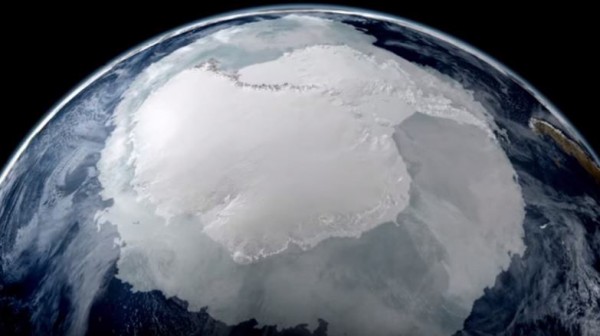By Jerre Medi, | January 25, 2017

If the iceberg finally breaks free, the largest portion with an approximate thickness of 350 metres (1,150 feet), will be floating on the ocean.(NASA)
The Antarctic Peninsula's landscape is in danger as the crack in the ice shelf is continuously growing bigger.
About 10 kilometre (6.2 miles) has been added to the crack since January 1, and it is visibly increasing. A satellite image which was captured on January 19 has confirmed this.
Like Us on Facebook
The huge iceberg about the size of Delaware is soon to break free in the Antarctic region if this continues. The images were taken by the satellite show that the rift has increased in length by up to 175 kilometres (108.7 miles).
The small crack began in 1960 and has doubled in size since it started speeding up its increase in length in 2010. The crack is now approximately 5,000 square kilometres (3,106.8 square miles) in size.
This is one of the biggest icebergs ever recorded in history, scientists say. The fastest increase in acceleration of the crack was detected in Dec 2016, and there is no sign that it would stop.
If the iceberg finally breaks free, the largest portion with an approximate thickness of 350 metres (1,150 feet), will be floating on the ocean.
The Larsen C shelf, which is the biggest among the three shelves, (Larsen A and Larsen B), is ten times bigger than Larsen B.
An alarming rise in sea level can happen, and it will affect the coastal area in the Antarctic Peninsula. There will be an estimated 3.9 inches (10 centimetres) increase in global sea level if Larsen C disintegrates from where it is attached.
The monitoring team (ESA's Sentinel-1 satellite system) continues to capture images to give a latest update of the upcoming danger in the Antarctic Peninsula.
While most scientists and researchers believe that the crack is currently developing fast, there is still a tendency that its progress could slow down, Adrian Luckman of Swansea University told the media.
-
Use of Coronavirus Pandemic Drones Raises Privacy Concerns: Drones Spread Fear, Local Officials Say

-
Coronavirus Hampers The Delivery Of Lockheed Martin F-35 Stealth Fighters For 2020

-
Instagram Speeds Up Plans to Add Account Memorialization Feature Due to COVID-19 Deaths

-
NASA: Perseverance Plans to Bring 'Mars Rock' to Earth in 2031

-
600 Dead And 3,000 In The Hospital as Iranians Believed Drinking High-Concentrations of Alcohol Can Cure The Coronavirus

-
600 Dead And 3,000 In The Hospital as Iranians Believed Drinking High-Concentrations of Alcohol Can Cure The Coronavirus

-
COVID-19: Doctors, Nurses Use Virtual Reality to Learn New Skills in Treating Coronavirus Patients







